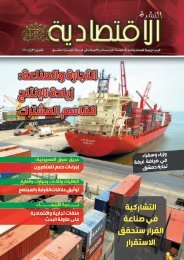SIGAR
2017-01-30qr
2017-01-30qr
You also want an ePaper? Increase the reach of your titles
YUMPU automatically turns print PDFs into web optimized ePapers that Google loves.
ECONOMIC AND SOCIAL DEVELOPMENT<br />
with big increases in student and other social benefits, employee benefits,<br />
subsidies, and cultural-heritage-preservation costs. 594<br />
While domestic revenues increased by 32.0% year-on-year, recurrent<br />
revenue streams like taxation and customs revenues increased by a more<br />
modest, yet still respectable, 9.7%. According to an Afghanistan Analysts<br />
Network (AAN) report, this is partially due to stronger revenue-collection<br />
efforts and the impact of new taxes at higher rates implemented in the latter<br />
part of 2015. As shown in Table 3.19, sales-tax revenues increased about<br />
39.5%, while income-tax revenue increased more than 10%. Revenue from<br />
administrative fees increased nearly 75%. Administrative fees are levied<br />
on passports and visas, vehicle registrations, professional and commercial<br />
licenses, and airspace-overflight charges, among other items. 595 Customs<br />
duties and fees made up 18% of the government’s total domestic revenues<br />
in the first 11 months of 2016. However, customs revenue dropped 4.8%<br />
compared to the same period last year. 596 It is unclear whether this is due to<br />
lower imports or reduced collections. 597<br />
Revenues from natural resources almost doubled to AFN 1.2 billion<br />
($18.3 million) from the same period last year—largely due to royalty fees<br />
and the sale of minerals—an unexpected gain given the ongoing constraints<br />
in that sector. The Afghan government also received an AFN 10.3 billion<br />
($153.8 million) revenue boost from what appears to be a one-time receipt<br />
from an unspecified sale of government property. Additionally, revenue<br />
from the sale of land and buildings was substantially higher than the<br />
prior period. 598<br />
Are Revenue Increases Sustainable?<br />
Afghanistan’s fiscal sustainability is at risk, according to the World Bank. 599<br />
Monetary depreciation of the afghani against the U.S. dollar may affect the<br />
government’s purchasing power and reduce the impact of the improved<br />
revenue collection to the extent the government makes dollar-denominated<br />
purchases or disbursements.<br />
The AAN report said depreciation caused the afghani value of customs<br />
duties on imports and other taxes levied on foreign-exchange flows to<br />
increase artificially. As a result, billions of AFN-denominated revenue in<br />
FY 1395 (2016) consisted of a central bank transfer of paper profits from<br />
exchange-rate changes to the budget. It was not a result of any substantial<br />
improvement in the economy, greater revenue collection, or recurrent revenue<br />
streams like new or higher tax rates. The report also said one-time<br />
revenue injections from public enterprises such as the sale of stateowned<br />
land and buildings, passport fees, and Kabul Bank recoveries are<br />
likely unsustainable. 600<br />
The Afghan fiscal gap—the difference between domestic revenues<br />
and expenditures—is large. 601 Domestic revenues paid for only 46.4% of<br />
Afghanistan’s total budget expenditures through month 11 in FY 1395,<br />
152<br />
SPECIAL INSPECTOR GENERAL I AFGHANISTAN RECONSTRUCTION







